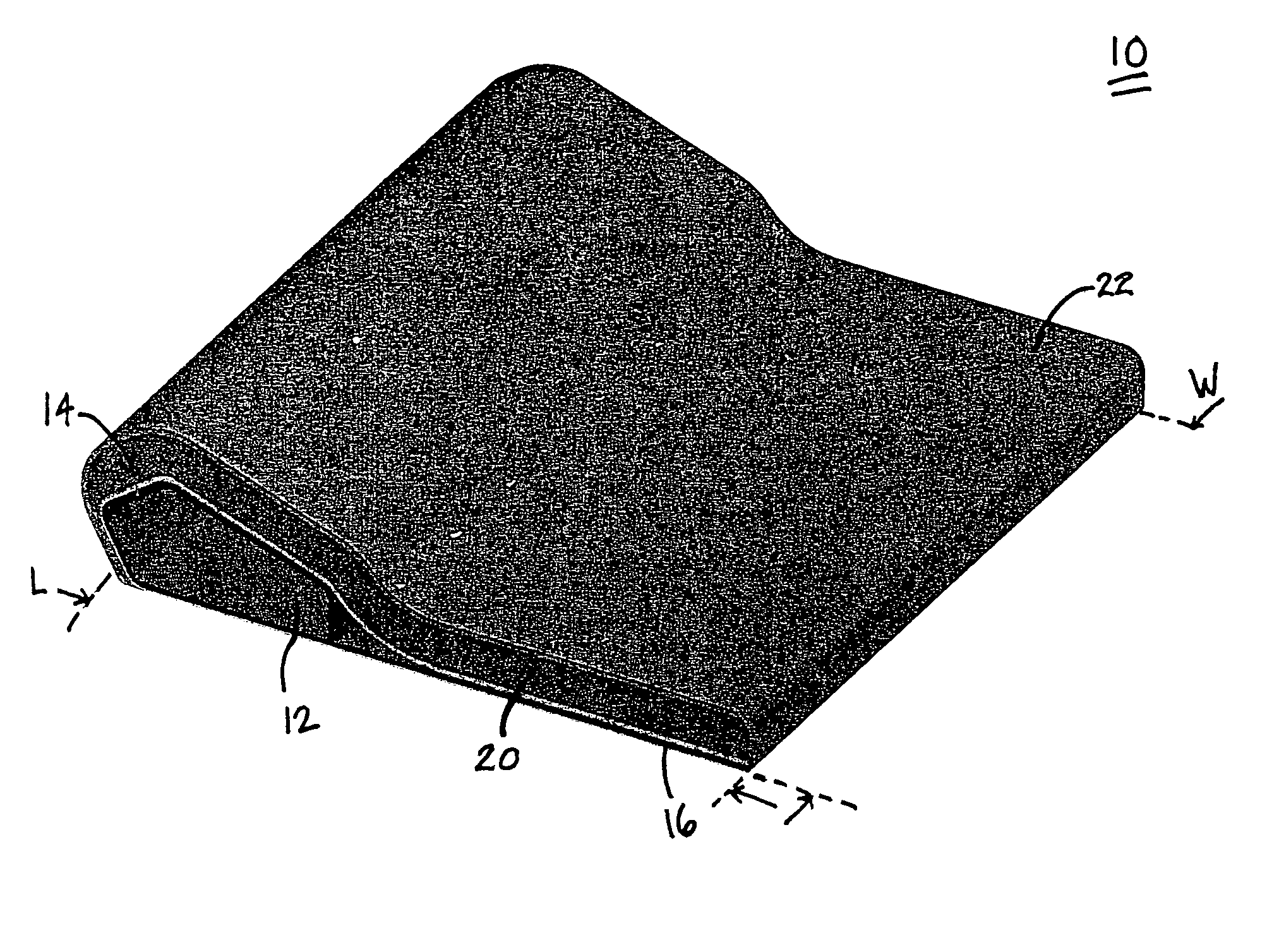Seating device
a seating device and seat technology, applied in the field of seating devices, can solve the problems of increasing the risk of injury to users, increasing the risk of aspiration, and affecting so as to improve the comfort of patients, improve the posture, and facilitate the manufacture of convenient and efficient effects
- Summary
- Abstract
- Description
- Claims
- Application Information
AI Technical Summary
Benefits of technology
Problems solved by technology
Method used
Image
Examples
Embodiment Construction
[0023]The exemplary embodiments of the orthotic seating insert or device disclosed are discussed in terms of a seating device for use in a sling seat that is supported by rails, such as a sling seat of a wheelchair. The presently disclosed seating device provides posture correction, pressure relief, and seating stabilization by way of a rigid frame covered by pressure conforming material(s) that mold to the anatomy of a user seated in the sling seat with the device inserted. It is contemplated that the seating device may also be employed with other chairs that employ a sling seat, and also other rehabilitation apparatus that accommodate orthotic seat inserts.
[0024]The following discussion includes a description of an orthotic seating device in accordance with the present disclosure. Reference will now be made in detail to the exemplary embodiments of the disclosure, which are illustrated in the accompanying figures.
[0025]Turning now to the figures, wherein like components are design...
PUM
 Login to View More
Login to View More Abstract
Description
Claims
Application Information
 Login to View More
Login to View More - R&D
- Intellectual Property
- Life Sciences
- Materials
- Tech Scout
- Unparalleled Data Quality
- Higher Quality Content
- 60% Fewer Hallucinations
Browse by: Latest US Patents, China's latest patents, Technical Efficacy Thesaurus, Application Domain, Technology Topic, Popular Technical Reports.
© 2025 PatSnap. All rights reserved.Legal|Privacy policy|Modern Slavery Act Transparency Statement|Sitemap|About US| Contact US: help@patsnap.com



